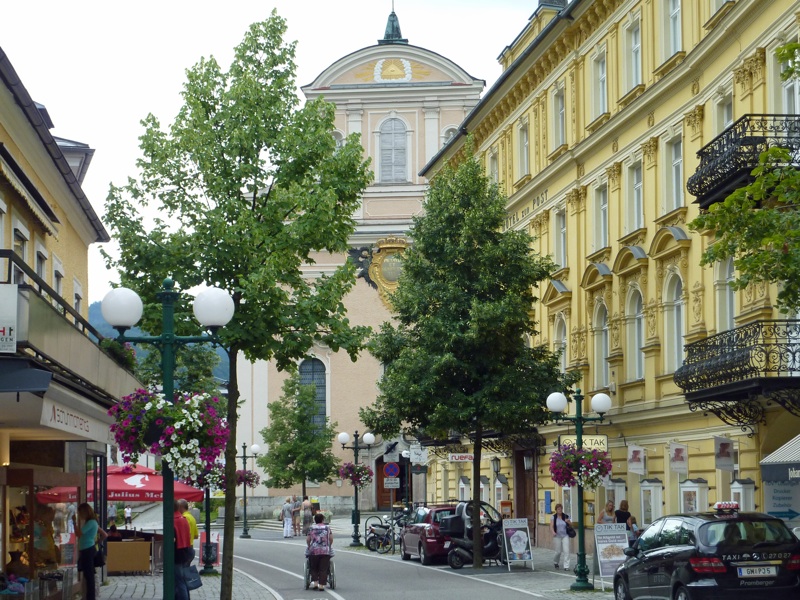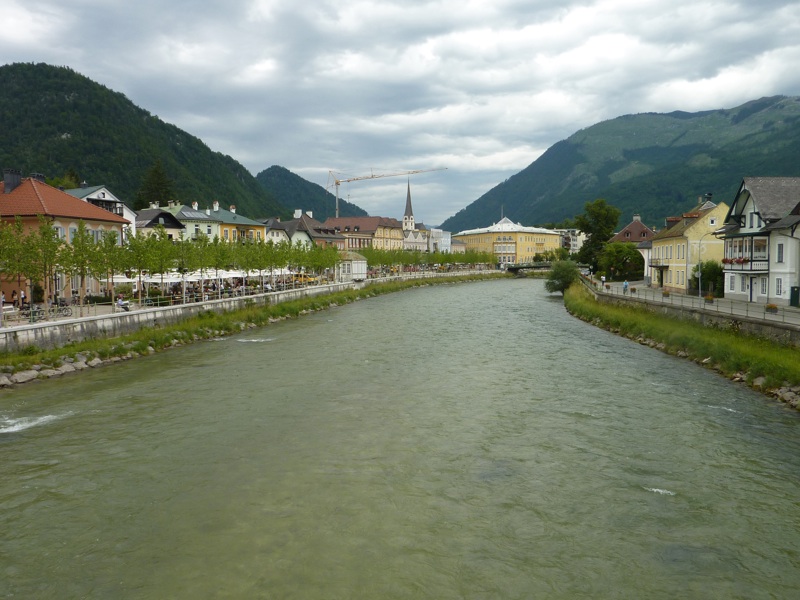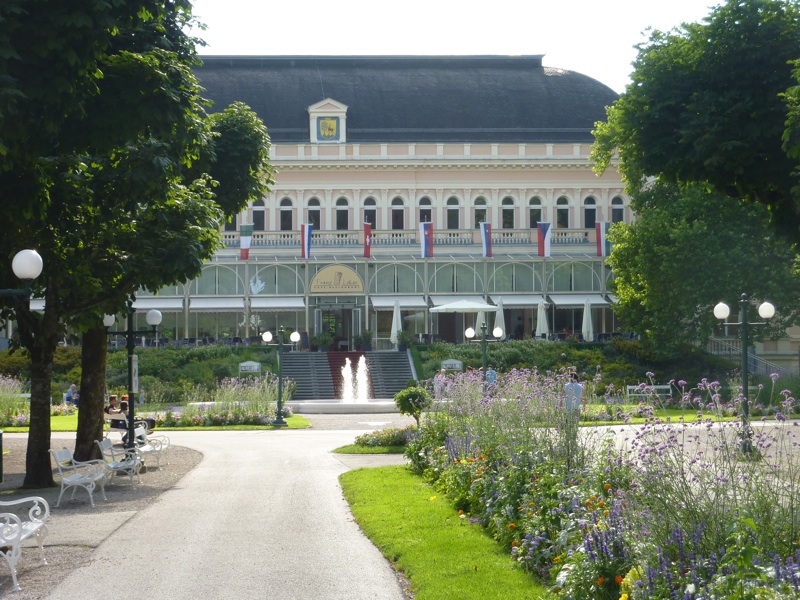 (➤
map)(➤ map). Since the 1820s, a health resort of European importance, since 1849 a summer residence of Emperor Franz Joseph. Today, the most important holiday resort of the tourist region Salzkammergut.
(➤
map)(➤ map). Since the 1820s, a health resort of European importance, since 1849 a summer residence of Emperor Franz Joseph. Today, the most important holiday resort of the tourist region Salzkammergut.Bad Ischl (until 1906: Ischl) - is a well-known Austrian health resort located in the southern part of the state of Upper Austria, in the district of Gmunden. The city (about 14,000 inhabitants) is located at an altitude of 468 m above sea level, in the Salzkammergut-Berge range (a subgroup of the Salzburger Alps), in a bend of the Traun River
 near the place where Ischl flows into the river Traun
near the place where Ischl flows into the river Traun  . The area where Bad Ischl is located has been inhabited since prehistoric times. In antiquity, they were part of the territory of the Roman Empire.
. The area where Bad Ischl is located has been inhabited since prehistoric times. In antiquity, they were part of the territory of the Roman Empire.The first mentions in modern times come from the second half of the 13th century. For several centuries, Bad Ischl was one of the most important towns in the region of the Habsburg state known for its salt mines. The history of Bad Ischl as a health resort dates back to the beginning of the 19th century, when the local waters began to be used for therapeutic purposes. The first salt bath and the first hotels were built in Bad Ischl in the 1820s. Soon after, the city became a popular health resort attracting Austrian aristocrats and then visitors from all over Europe. In 1849, Bad Ischl became the summer residence of Emperor Franz Joseph. In the second half of the 19th century, the city was one of the most popular Austrian summer resorts, eagerly visited by the aristocracy, politicians, and artists. Today, Bad Ischl is not as important as it was in the 19th century, but it remains perhaps the most important town in the Salzkammergut region and one of the most popular tourist destinations in all of Austria.
 , the villa of Franz Joseph and Empress Elisabeth of Bavaria located north of the city center in a park known as the Kaiserpark
, the villa of Franz Joseph and Empress Elisabeth of Bavaria located north of the city center in a park known as the Kaiserpark  . The villa is still owned by the Habsburg family, but part of the residence and the park are open to the public (guided tours); you can also visit the small Museum of Photography
. The villa is still owned by the Habsburg family, but part of the residence and the park are open to the public (guided tours); you can also visit the small Museum of Photography  , located in the former tea house of Empress Elisabeth, Marmorschlössl.
, located in the former tea house of Empress Elisabeth, Marmorschlössl.Marker
 stands for a railway station, marker
stands for a railway station, marker  - for Trinkhalle built in 1829-1831, marker
- for Trinkhalle built in 1829-1831, marker  - for parish church of St. Nicholas (Stadtpfarrkirche St. Nikolaus) with a history dating back to the 14th century, and the marker
- for parish church of St. Nicholas (Stadtpfarrkirche St. Nikolaus) with a history dating back to the 14th century, and the marker  - for a building called the Seeauerhaus, standing by the esplanade stretching along the river bank, in which in 1853, the engagement of Franz Joseph and Elisabeth took place, today it houses the City Museum (Stadt Bad Ischl). Other noteworthy sights in Bad Ischl include the Lehár Villa (former Franz Lehár's estate, now housing a small museum), the building known as the Kongress & Theaterhaus
- for a building called the Seeauerhaus, standing by the esplanade stretching along the river bank, in which in 1853, the engagement of Franz Joseph and Elisabeth took place, today it houses the City Museum (Stadt Bad Ischl). Other noteworthy sights in Bad Ischl include the Lehár Villa (former Franz Lehár's estate, now housing a small museum), the building known as the Kongress & Theaterhaus  ( formerly Kurhaus) built in 1873-1875, and
a historic post office building from 1895
( formerly Kurhaus) built in 1873-1875, and
a historic post office building from 1895  .
. marker, to the Katrin hall
marker, to the Katrin hall  (Katrin Alm), a good starting point for many easy hikes, such as Katrin Peak
(Katrin Alm), a good starting point for many easy hikes, such as Katrin Peak  with an extensive beautiful view of Bad Ischl and the surrounding area.
with an extensive beautiful view of Bad Ischl and the surrounding area.




